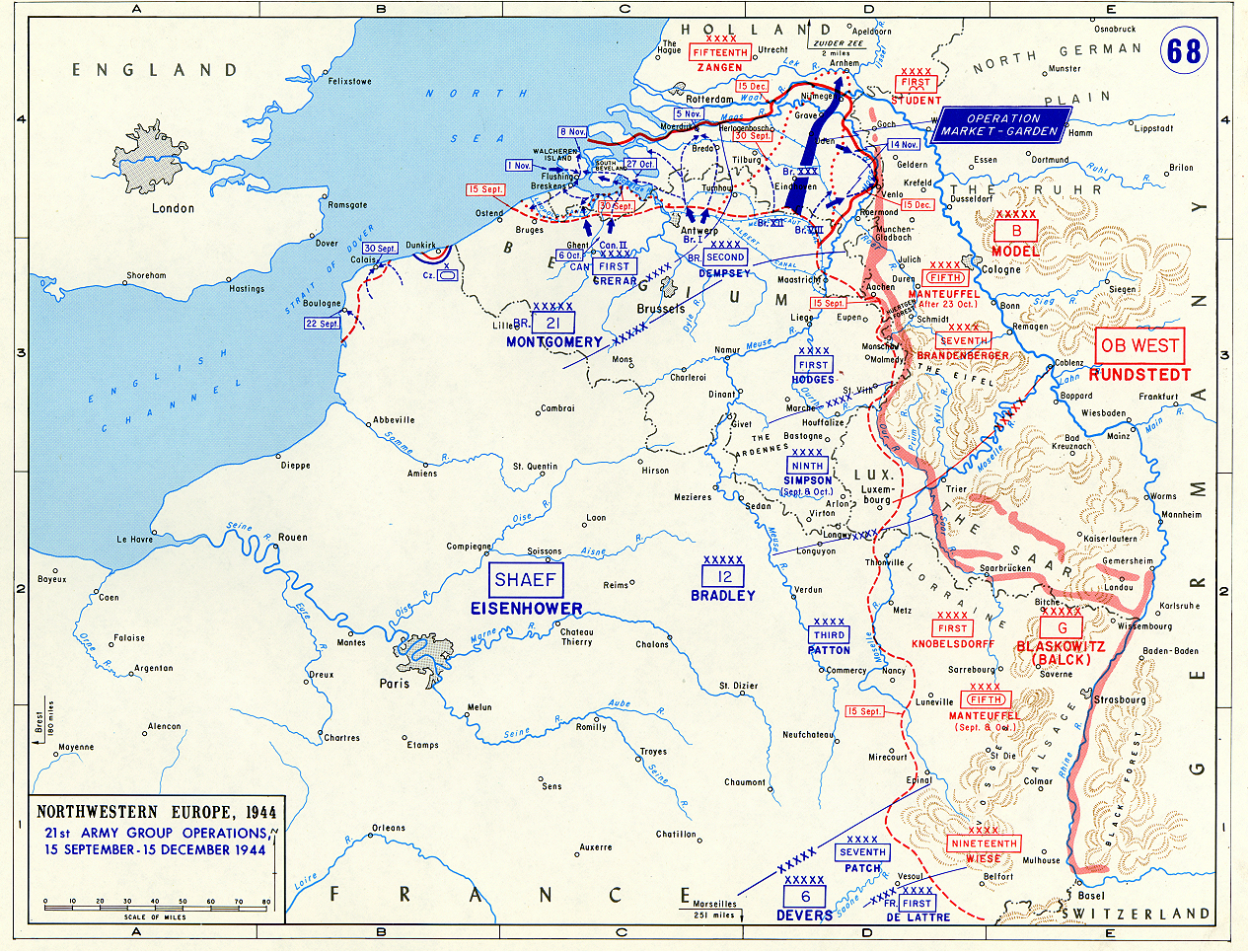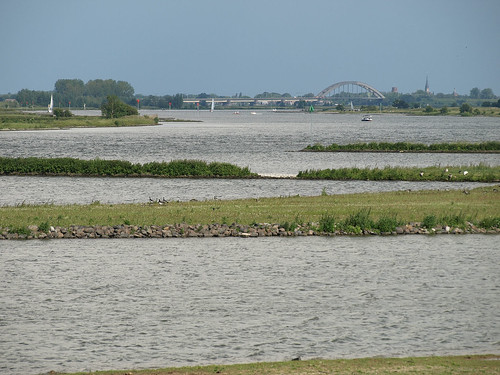McPherson
Banned
If it works MG bypasses the West wall (highlighted in the map below).
Allows the potential for the Ruhr to be overrun and this would have starved the German army of most of its tank, Artillery and aircraft production and if this was not achievable (because of 'Germans') it lengthens the Western front considerably forcing the German army to defend a much longer front line - forcing them to use forces from teh Eastern front (and / or forces used in 'Watch on the Rhine' instead of conducting a counter attack through the Ardennes)
Traps 15th Army (or forces it to bug out leaving much of its heavy kit and supplies behind)
Overruns V2 sites threatening London
Liberates most if not all of the Netherlands
Isolates the Sheldt anyway (which could not be brought into operation much before it was, even had Monty focused more on it) allowing it to be isolated/besieged/assaulted by the Canadian army and commandos (once they had been RnR'd - they had all just been pulled off the line on or about 1st Sept - most having fought since D-Day so they were not going to be available much before late Oct anyway and Walcheren Island is not going to be taken without them)
As for the truck issue - the 1400 trucks didn't simply all suddenly stop running on the same day - it was simply that the engines did not last as long as expected due to the incorrect piston rings and only a few hundred were in the workshops at any given time - and to put this into context - the UK built 1.5 million vehicles during WW2 - a figure only exceeded by the USA.
The major issue with opening up the Scheldt earlier is the demarcation lines between the British 2nd army and the Canadian 1st Army - this resulted in the Canadians having to do too much as it turned out.
I think it was Carl that in another thread suggested that 'with hindsight' the demarcation lines move north of Antwerp/Ghent (once the Antwerp had been taken on the run on or about 4th Sept - note that Ghent does not fall till Oct 6th) giving some of the responsibility to British units and reducing the subsequent burden on the Canadian army and give freedom to British units and their commanders to act more decisively and to take greater advantage of the quick advance in the first week of Sept.
I am not sure if this should be a 21st Army group decision or one made at SHAEF?
I am certain that it would be unlikely to result in an immediate collapse of the German Army had it worked - but it would be starved it of much of the equipment that those factories produced in the 6 months between Oct and March which would have resulted in a faster collapse than OTL and this or even the greatly lengthening the front that the German army had to cover would have been of far greater benefit to the allied cause than freeing up Antwerp potentially a couple of weeks earlier.
So far from Monty not being able to read a map - I think he was just fine and had his eye on a far larger goal.

Uhmm.
1. Not just the numbers of trucks, the kinds of trucks. British equivalent to the American 2 and 1/2 tonners. ATV cargo haulers.
2. The boundary question is a separate issue, but if you move the boundary, and put British units into clearing the Scheldt you decrease already scarce exploitation forces for MG. By at least a corps by what I think is suggested.
3. No way is anybody going to encircle the Ruhr from that position where the Lek runs into the Rhine.

You can turn north and advance across the Polders. You need lots of assault boats and bridging, cause it is Holland and they are Germans. East? (Reichswald) Forget it. This is what I mean by Montgomery not being able to read a map.
.jpg)
As for the American view of what is happening? Let us just say the American military understood that CHURCHILL could not read a map.




